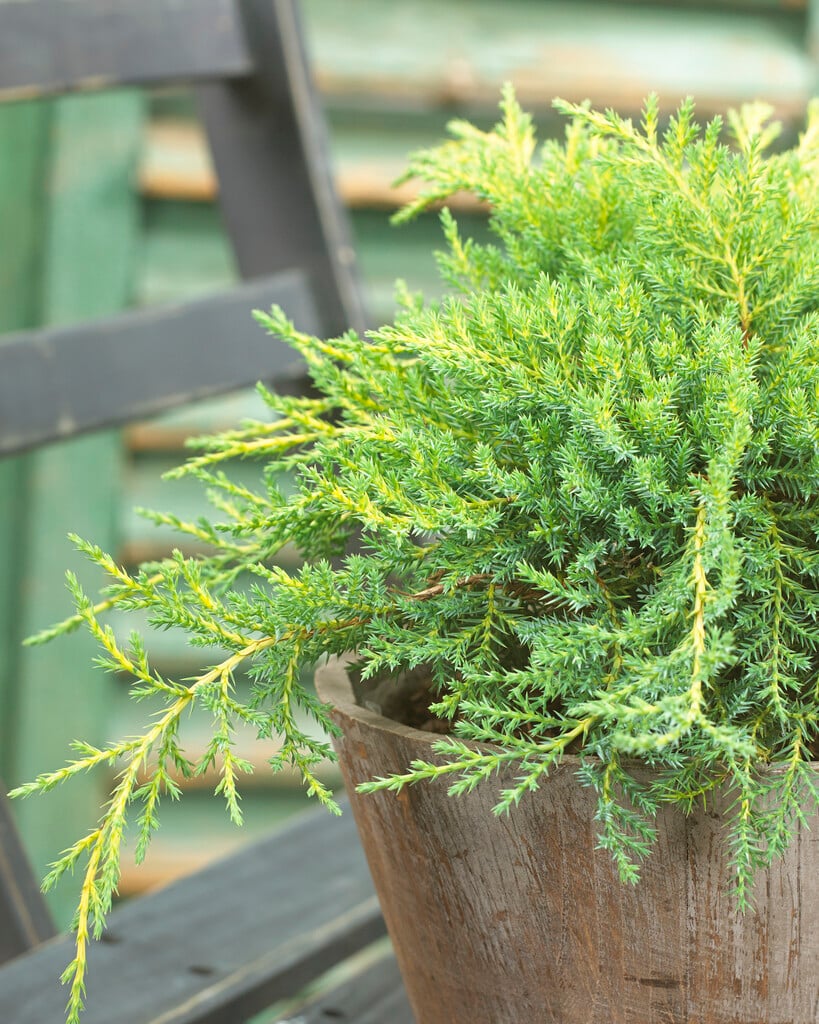Not the plant you're looking for? Search over 300,000 plants
Shrubs
Size
Ultimate height
1–1.5 metresTime to ultimate height
5–10 yearsUltimate spread
1.5–2.5 metresGrowing conditions
Chalk
Loam
Sand
Clay
Moisture
Moist but well–drained, Well–drainedpH
Acid, Alkaline, NeutralColour & scent
| Stem | Flower | Foliage | Fruit | |
| Spring | Yellow Gold | |||
|---|---|---|---|---|
| Summer | Yellow Gold | |||
| Autumn | Yellow Gold | |||
| Winter | Yellow Gold |
Position
- Full sun
- Partial shade
Aspect
East–facing or South–facing or West–facing
Exposure
Exposed or ShelteredDrought resistance
Yes Hardiness
H6Botanical details
- Family
- Cupressaceae
- Native to GB / Ireland
- No
- Foliage
- Evergreen
- Habit
- Spreading branched
- Potentially harmful
- Harmful if eaten/skin allergen. Wear gloves and other protective equipment when handling
- Genus
Juniperus can be prostrate or erect, evergreen shrubs or trees with aromatic, scale-like or sharply pointed awl-shaped leaves, and small globose fruits
- Name status
Unresolved
How to grow
Cultivation
Grow in well-drained soil, including dry, chalky, or sandy soils, in full sun or light shade.
Propagation
Propagate by semi-hardwood cuttings in early autumn
Suggested planting locations and garden types
- City and courtyard gardens
- Low Maintenance
- Banks and slopes
- Flower borders and beds
- Ground cover
Pruning
See pruning group 1
Pests
May be susceptible to aphids, scale insects, conifer red spider mite and caterpillars
Diseases
May be susceptible to phytophthora, canker and honey fungus. See also Conifers: brown patches
Get involved
The Royal Horticultural Society is the UK’s leading gardening charity. We aim to enrich everyone’s life through plants, and make the UK a greener and more beautiful place.
